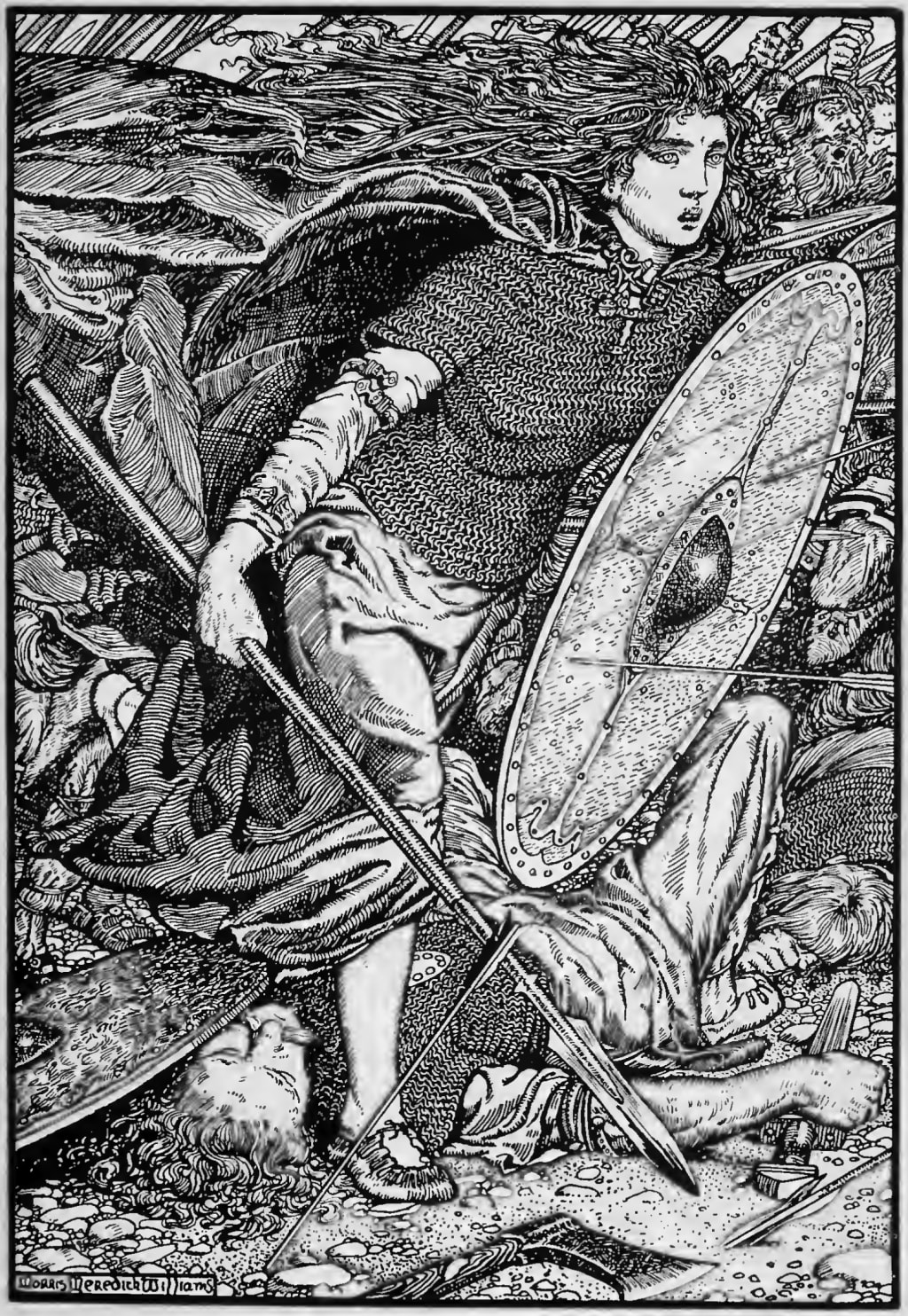A History of Transgender People, Volume IV
Transgender and Gender Non-Conformity in Northern Europe

So far in this series, I've discussed myth and legend. This is, on its surface, is not great historiography; but a culture's myths and legends inform their worldview. Perhaps not always in the most intuitive or impactful ways, but it does say something about the zeitgeist, especially when it comes to divisive or transgressive issues like gender and especially gender nonconformity.
However, in the case of the Norse cultures, we have some actual archaeological evidence to go on. Although, it is sparse. But first, the myths.
The Norse pantheon is pretty well-known in the West, especially to mythologists. And when it comes to gender nonconformity, the most frequently cited example is, of course, the shape-shifting trickster Loki.
Loki has several gender transgressions under his belt, but perhaps one of the most profound is that he is the mother of the eight-legged horse Sleipnir.
Ahem. In order to accomplish this task, he had to be impregnated by a horse. A big horse. So, like... Sometimes a cigar is just a cigar, but that one doesn't require a lot of analysis to get to the queer.
The fact that Loki is a shapeshifter is another interesting flaunting of gender norms. And it bears mentioning that Hel, daughter of Loki by the ice giant Angrboða, is depicted as having a "half-blue [corpse-like?] and half-flesh colored" skin tone, indicating a dual nature that is probably not unreasonable or out of character. In the Gylfaginning, a story from the 13th century Prose Edda, Hel is described as having half-black and half-flesh colored and having a temperament both "rather downcast" and "fierce-looking."
...
I've spent an appreciable percentage of my life in those two humors. They're kind of mutually exclusive. Being downcast does not lend itself to being fierce and vice versa. So Hel is of a dual nature and comes from a shapeshifting father and an ice giant mother.
For a more explicit subversion of gender norms, we can turn to the Thrymskvitha, in the Poetic Edda. This charming little tale recounts the theft of Mjolnir, Thor's hammer, and the Aesir's quest to get it back. The giant that stole it was hoping to barter it for Freya's hand in marriage. And Freya was... not digging it. Heimdall, the keen-eyed god forever on the lookout for the beginning of Ragnarok (from the luxury of his palace near the Bifrost—they normally leave a lot out of his characterization to simplify him down to a character that doesn't defy interpretation; keen-eyed, mind you), comes up with a plan: They'll dress Thor up as Freya and marry him to the frost giant.
Keen-eyed. So this has some rather interesting implications. Either:
a) Heimdall thought this was such a joking matter that he didn't expect anyone to listen to him, or
b) he thought it would work, which means he thought the giant would be into it, which leads to the possibility that
- the giants were pansexual, or
- the giants were blind, or
- Heimdall is projecting his own pansexuality onto the giants; or, lastly,
c) Heimdall was trying to get Thor killed.
I think we can safely discard "c," and Heimdall has better things to do than to crack wise with the jerk gods, so I think we can get "a" out of the way. So I don't think "b2" is a real possibility, although Heimdall probably felt that way, since he was known for his eyesight and giants were known for many other things, but not their eyesight. So either it was well known that the giants will bed anything that moves and nominally consent, or Heimdall thought Thor in a dress would be pretty hot and surely the giant would agree.
Mythology is fascinating in that way. But, here again, we have archaeology to back us up. Viking-age Scandinavians famously had the notion of a "shieldmaiden," a woman who went viking with the men, and essentially was accepted as a man in Norse culture, at least while they were abroad. However, there have been some interesting discoveries in Scandinavian graves. Skeletons with male-typical pelvises have been discovered with primarily feminine accoutrements such as weaving and sewing implements. Now, archaeologists of the Viking Age specifically (by and large, men) are quick to point out that "that doesn't mean anything." And they're not necessarily wrong in saying that. But to let that be the final word on the subject removes the possibility that trans women in Viking-age Scandinavia may have been a fixture and may have been accepted for women. Many of the written accounts are, of course, screwy and centuries after the fact, and indeed are told by medieval Christian writers, so it's unlikely that that facet of Scandinavian history would make it into the written history, whether it existed or not. What we do know is that Viking-age Scandinavians accepted women who assumed the gender roles of men, and they also had a seemingly-unprecedented positivity toward the rights of women. They had the most progressive rape laws to exist in the world at the time. Women held high places in domestic life. Some evidence exists to the assertion that men were considered too volatile and emotional to make household financial decisions. So, given that the Scandinavians were good to FTM transgender people, and they were good to women, it doesn't strike me as impossible that MTF trans people were shunned. And as we've hopefully by this point demonstrated, transgender people live all over the world, and no culture has none. Have we yet found a male skeleton buried in a dress? No, not that I'm aware of. But then it's been 900 years. That's a long time for stuff to disintegrate. And so too do the sands of time wear down us all.In the next volume, I will discuss the ancient and enduring and evolving concept of gender variance and transgression in Italy.If you wish to read more about the history of transgender people, I have written three other volumes on the subject
About the Creator
Sophia-Helene Mees de Tricht
I'm a socialist space penguin. I mean, I'm sure there are more important things about me, but I also don't want to be accused of misrepresenting myself, so let me just say that up front and loudly and clearly and oops! I'm about out of spa







Comments
There are no comments for this story
Be the first to respond and start the conversation.